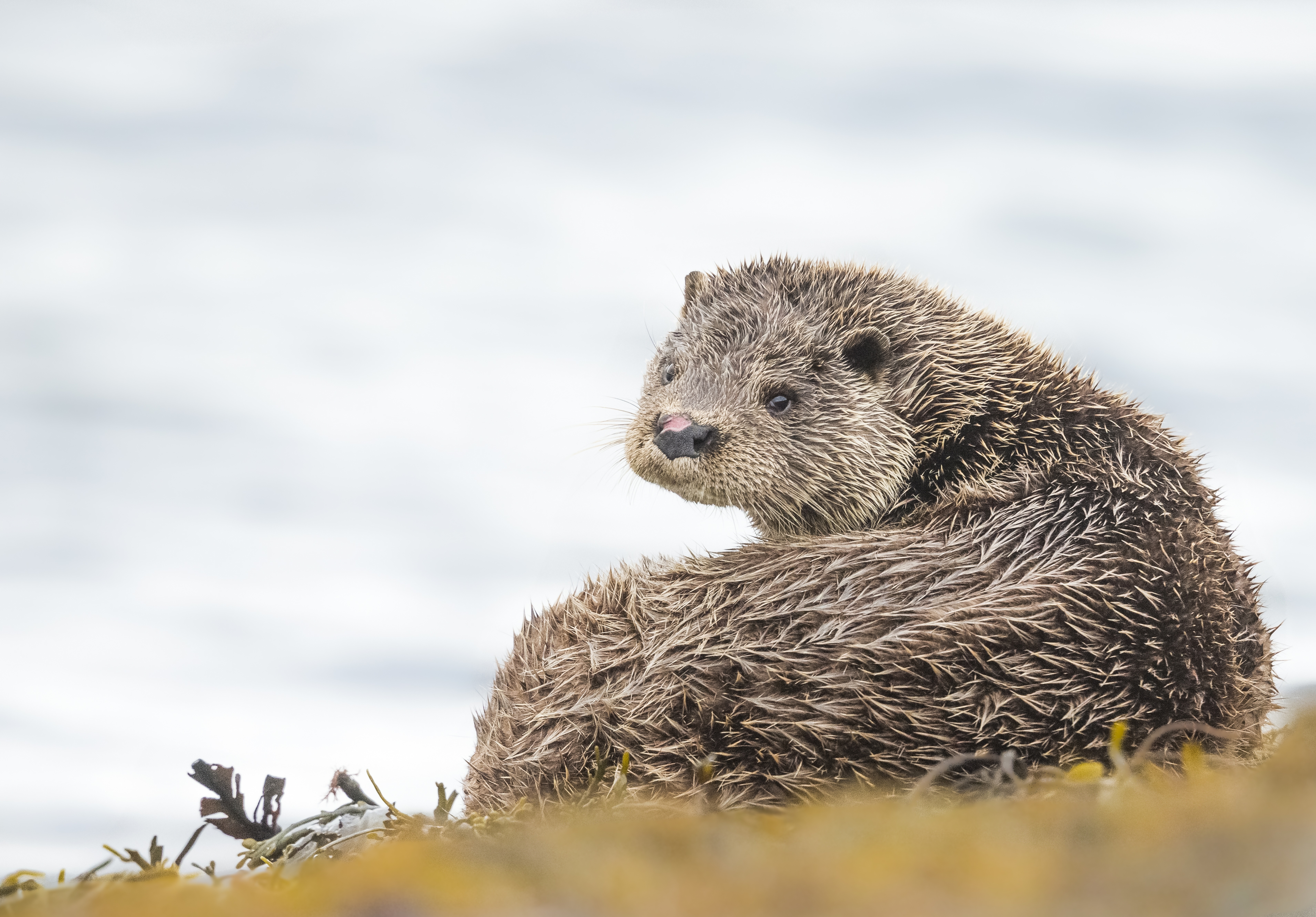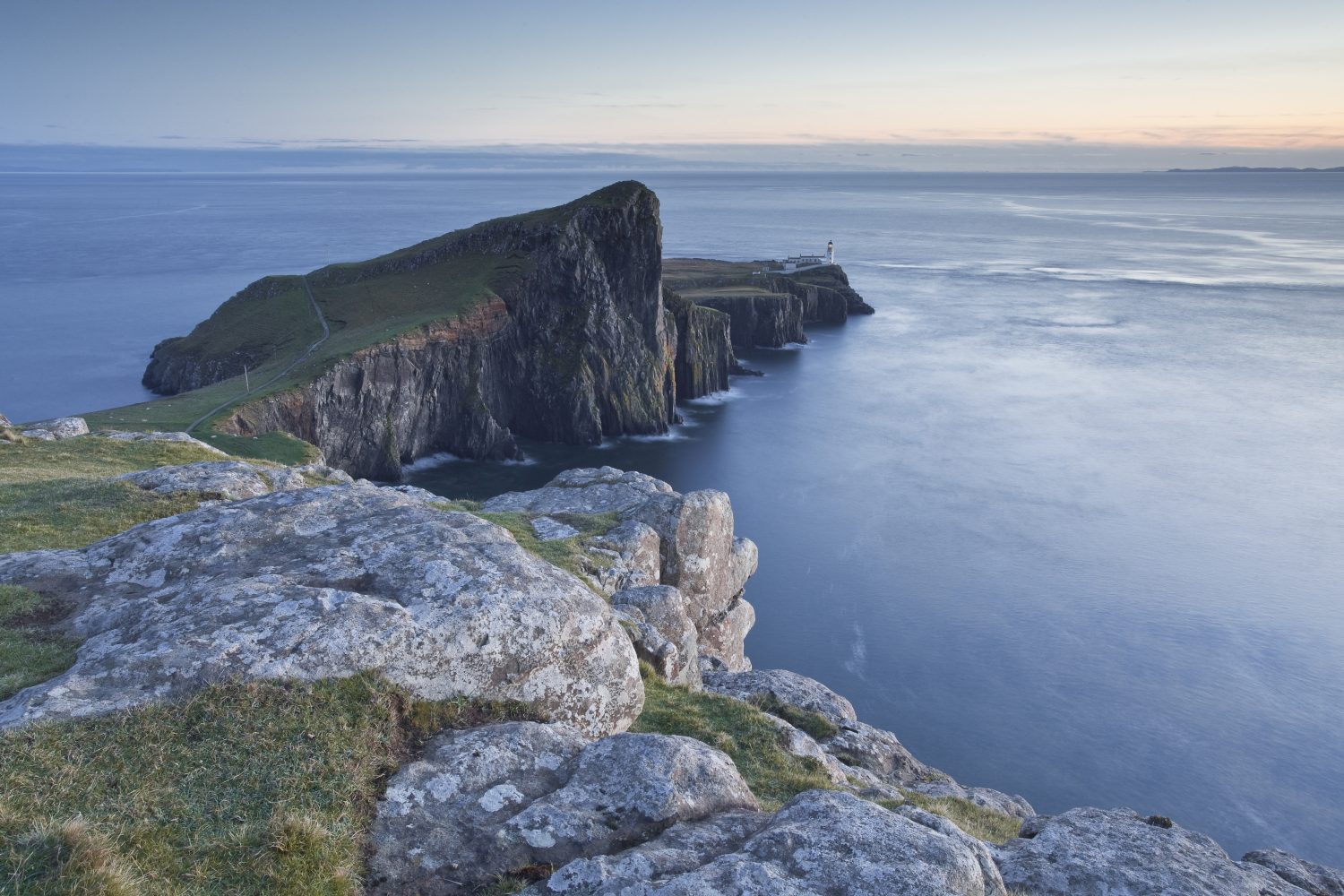As part of our commitment to highlighting important factors surrounding the environment, we are proud to be supporting Hebridean whale and dolphin charity.
Hebridean Whale and Dolphin Trust (HWDT) is a marine conservation charity that takes action through a unique program of community-based research and education. This two-pronged approach ignites strong local stewardship and supports meaningful change for the conservation of Hebridean cetaceans and marine life.
To discuss this topic, and others close to our heart, we are bringing you a series of articles looking at how our lifestyles need to adapt to the key ingredients driving change: pandemics, climate change, and biodiversity loss.
TOURISM: ‘Whale-watching by island hopping’
They say cold water swimming is one of the most immersive experiences in nature but when the ferry pulls out of Oban on the west coast of Scotland to deliver you to a Hebridean Island… it feels all-consuming. Surrounded by Scottish accents, the seagulls outcompete the engine noise, the sea breeze blows away any thoughts of office life.

I usually spend more time planning trips to the Hebrides than I spend there because it is an archipelago of islands: you are governed by the ferry timetable, which I like. You have to discard your biorhythms tied into landlocked lifestyles and business ventures. And think of it as an adventure – a holiday does not do justice to it. Plus, the weather might change your plans quite dramatically, and somehow, if you frame it as an adventure, it doesn’t matter then.
In southern parts of Britain, the seaside resorts and fishing ports are revered in history and in our culture, and even in our BREXIT negotiations. However, they somehow feel like separate entities on the coast. On the west coast of Scotland, the seafaring culture and west coast communities have always been entwined.





It is thus that a group of wildlife conservationists: Hebridean Whale and Dolphin Trust established a route through the island taking in hot spots both for wildlife and the local cultural heritage. Many of them have extraordinary sea views, such as the base of a lighthouse on a headland, and so have become firm favourites for land based whale watching. However, knowing where to look and what to look for is not always easy. The thrill of searching for that gleaming back or cloudy breath is exhilarating.

That is where this ‘Hebridean Whale Trail’ comes in. It supports accessible, low-impact whale-watching from land, which for many is a new way of approaching marine wildlife spotting. Dedicated volunteers at landmarks and information online helps you tune into what you are looking for and the history behind human and natural history of the area. Explore different sections of the route.






Minke whales and various species of dolphins are not afraid to come close the shore, especially if there are strong currents to help them catch their prey. Basking sharks only just disturb the water as they follow currents and feed, at a gentle pace, just below the surface. A remote clifftop can often provide a better vantage point from which to view the whole animal.
Two young women set off on bikes one summer, having volunteered for the HWDT on the Whale Trail project, to ‘cycle’ this route. They called themselves: two serious whale and dolphin nerds who have both just completed a Masters in marine mammal science. Obviously, they had to use ferries to complete the route but that reduced the amount of cycling nicely. Read more
The trained volunteers and local experts along the route are passionate about protecting our seas. Their enthusiasm has attracted public support to survey and record wildlife sightings to further the knowledge of local species. As this interest grows they hope it will start to boost the economy in these coastal communities through eco-tourism.





Unfortunately you can go one step further, and immerse yourself, below the surface of the Hebridean Sea ‘to get the T-shirt’. If you can snorkel or dive you could go with a local operator and sea the rich and colourful marine life. Most people are surprised at what they find on the reefs… but we cannot ‘see’ the currents that bring warm nutrient rich waters to our coast, known as the Gulf Stream.








I used to work as an underwater wildlife cameraman and I spent a lot of time in the Hebrides looking at a mirky green world below the surface. This was because of the nutrients and plankton in the water that gives life to the marine ecosystem. There are periods though in the spring and autumn when ocean currents bring clarity and majesty to the underwater seascape. But whenever a seal swims up to your face or you slip off the back of a boat only to find the whale everybody is looking for is ‘hanging out’ under the hull, enjoying the engine vibrations… you feel warm inside.
If you wanted to fly somewhere abroad that looks similar to the Hebrides you might need to go to Argentina or British Columbia… Is your first thought about the risk of spreading the viral pandemic? Or did you think about Radio 4 interviews with desperate aviation authorities talking about how they might nearly be ready to try low carbon fuels for their passenger planes? Or did you think, well, I was imagining staying in Britain for the time being and was looking for somewhere off the beaten track?
Holidays off the beaten track are going to become so popular that they now come hand in hand with a responsibility to find the best eco-tourism operators and support the local communities that you visit.
The next article in this series looks at our biodiversity budget for the planet: everything that impacts on natural habitats is accelerating both climate change and our chances of another pandemic.

